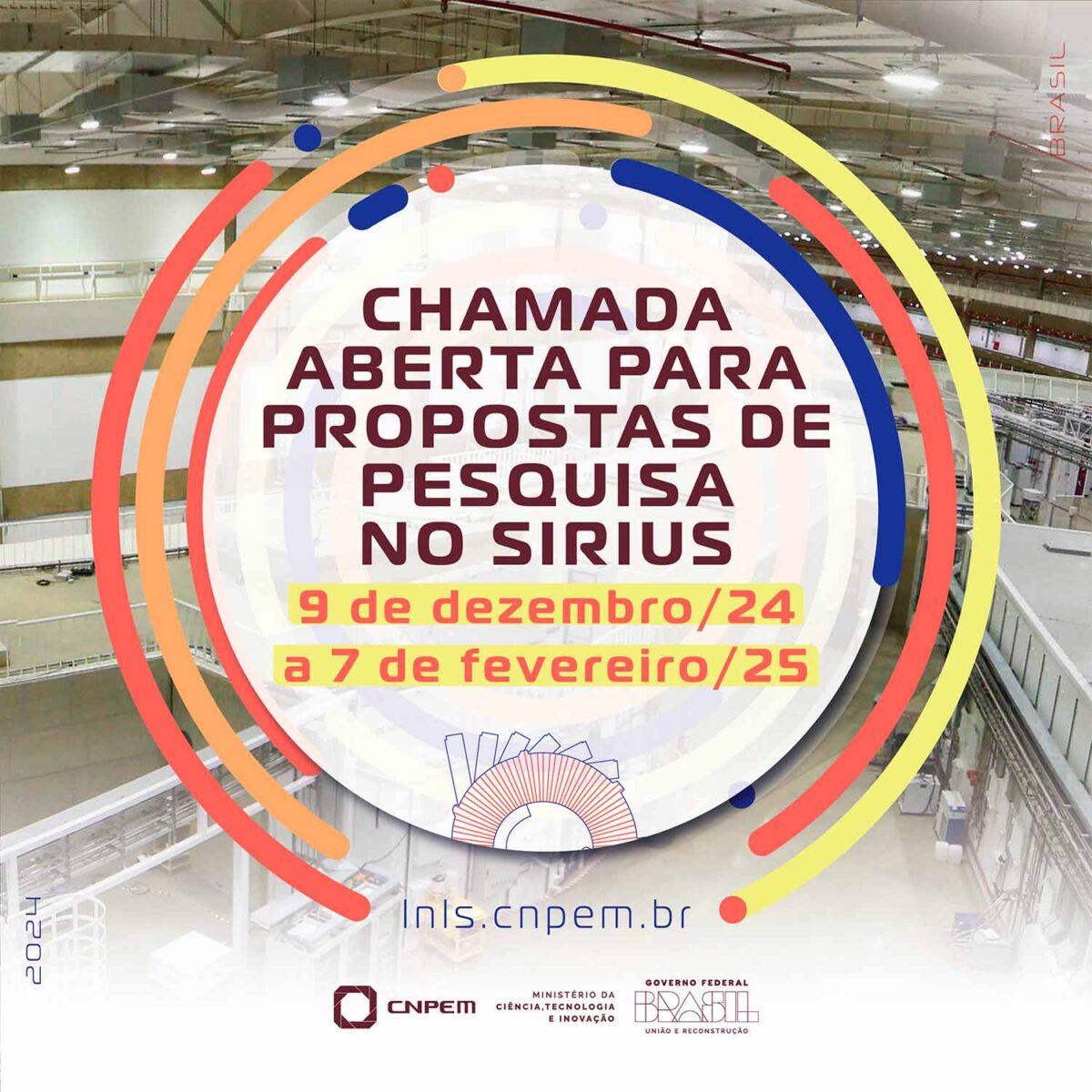
Ten beamlines are operating and accepting regular proposals.
The fifth call for proposals for research at Sirius will run from December 9, 2024 to February 7, 2025
The Brazilian Center for Research in Energy and Materials (CNPEM), an organization overseen by the Ministry of Science, Technology and Innovation (MCTI), has opened its fifth regular call for research projects at Sirius, the fourth-generation synchrotron light source operated by the Brazilian Synchrotron Light National Laboratory (LNLS).
From December 9, 2024 to February 7, 2025, researchers who are interested in conducting experiments at Sirius may submit proposals. The results will be announced April 23–25, 2025 and the selected experiments will be conducted from May to October 2025.
Although there is no cost for academic use, researchers from Brazilian and foreign institutions who live in Latin America and the Caribbean whose projects are approved may request financial aid for their trip to Campinas, São Paulo (where Sirius is located) to conduct their research.
Ten beamlines are in operation and available for proposals. Research projects for the Manacá and Cedro beamlines can be submitted as part of a fast-track system on a rolling basis.
Although they are not part of this regular call for proposals, the Sapucaia and Quati beamlines, dedicated respectively to Small-Angle X-ray Scattering (SAXS) and X-ray Absorption Spectroscopy (XAS) techniques, will be available during the first half of 2025 in scientific commissioning mode, where users will be able to conduct experiments that assist in the fine-tuning of these beamlines. These experiments are expected to take place in the second half of 2025.
As in previous calls for proposals, the research proposals will be evaluated using a double blind distributed evaluation system, in which all the principal investigators submitting proposals also serve as potential reviewers in their working areas during the same call for proposals. At least five reviewers evaluate each proposal, and for each proposal they submit, principal investigators receive five proposals to review.
We recommend researchers review the rules for the evaluation process, considering the importance of collaborating in this process with detailed assessments as well as the impact of evaluation quality in scoring for the respective proposals. For the first time, the evaluation system will penalize applicants who do not provide thorough commentary in their reviews.
In order to recognize scientifically valuable proposals that were not selected during the fourth call because of the volume of applicants, projects that were received, positively considered but not approved may be resubmitted in the fifth call: the previous score will be maintained, with 0.2 points added.
In these cases, the researcher should select “resubmission” and resubmit the proposal via the SAUOnline system, without any changes to the original proposal. Those wishing to edit or add more to a pre-existing proposal should indicate they are submitting a new proposal in accordance with the current process.
When resubmitting a proposal, those researchers are expected to serve as ad hoc reviewers of five research projects for each proposal submitted, following the same rules as a conventional submission.
NOTE: Researchers wishing to resubmit a research proposal must wait for this modality to be functional in the system: the date will be announced soon.
More information about submitting proposals and financial aid can be found at the Information for Users section of the LNLS website; you can also contact the technical staff at LNLS to answer any questions using the form below.
Contact form - Submit your doubt about the call for proposals
The Brazilian Synchrotron Light National Laboratory (LNLS) works with scientific research and technological development that involves synchrotron light, focusing on the operation and utilization of the multidisciplinary potential of Sirius, the country’s most advanced scientific infrastructure. With ten research stations already online and open to the scientific and industrial communities, Sirius allows thousands of researchers from various areas to test their hypotheses about the microscopic mechanisms responsible for the properties of both natural and synthetic materials used in a variety of fields such as health, the environment, energy, and agriculture. LNLS is part of the Brazilian Center for Research in Energy and Materials (CNPEM) in Campinas, São Paulo, a private non-profit organization overseen by the Ministry of Science, Technology, and Innovation (MCTI). https://lnls.cnpem.br/
The Brazilian Center for Research in Energy and Materials (CNPEM) is home to a state-of-the-art, multi-user and multidisciplinary scientific environment and works on different fronts within the Brazilian National System for Science, Technology and Innovation. A social organization overseen by the Ministry of Science, Technology and Innovation (MCTI), CNPEM is driven by research that impacts the areas of health, energy, renewable materials and sustainability. It is responsible for Sirius, the largest assembly of scientific equipment constructed in the country, and is currently constructing Project Orion, a laboratory complex for advanced pathogen research. Highly specialized science and engineering teams, sophisticated infrastructure open to the scientific community, strategic lines of investigation, innovative projects involving the productive sector, and training for researchers and students are the pillars of this institution that is unique in Brazil and able to serve as a bridge between knowledge and innovation. CNPEM also operates the Brazilian Synchrotron Light (LNLS), Biosciences (LNBio), Nanotechnology (LNNano), and Biorenewables (LNBR) National Laboratories, as well as the Ilum School of Science, which offers a bachelor’s degree program in science and technology with support from the Ministry of Education (MEC). https://cnpem.br/
Board president dies on December 1
The Brazilian Center for Research in Energy and Materials (CNPEM) has a research vacancy, with a scholarship from the São Paulo Research Foundation (FAPESP), in the Technical Training Level 5 (TT5) category.